Our winemaking
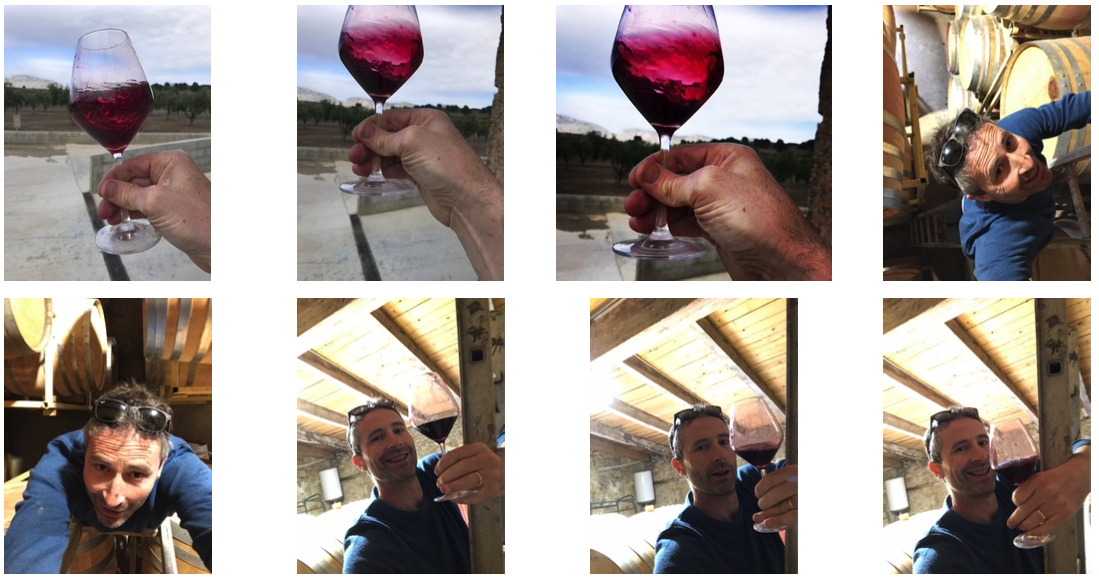
We live and work in London, so even though Justin goes to and from Maury 7-8 times a year, we are very lucky to have the help of the brilliant winemaking team of Jean-Marc Lafage at Chateau St Roch. The next section explains how our wine is made:
All of the grapes that are used for the red wines of Domaine of the Bee are harvested by hand, often into small boxes, and delivered to the winery door.
Since 2017, we have been experimenting with whole bunch fermentation. The positives are a lighter, fresher style, around 0.7-0.8% less alcohol, an aromatic complexity that invites a first sip, and a savoury, lip-smacking vibrancy on the palate that keeps you coming back for another.
The negatives can include a certain greenness of tannin if the grapes are not ripe enough, but we rarely see this, and we have been increasing the proportion of whole bunch from 10% towards 50%, depending on the year.
Grapes destined for whole bunch fermentation are just tipped straight into an open barrel, lightly crushed by foot, so there is enough juice to cover the bunches, and then sealed until we are ready for fermentation to begin.
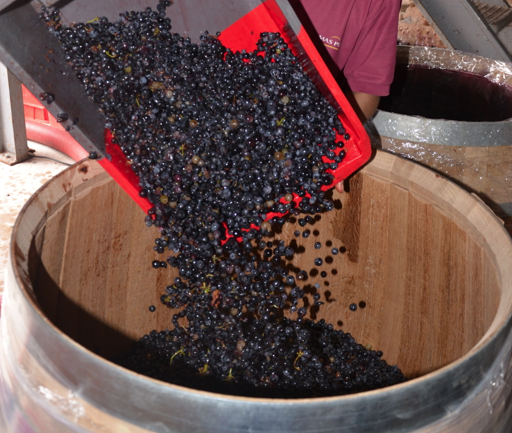
Grapes needing de-stemming, including any unhealthy grapes that need hand-sorting at the crusher, are put through the de-stemmer, often without being crushed, and allowed to drop straight into an open barrel.
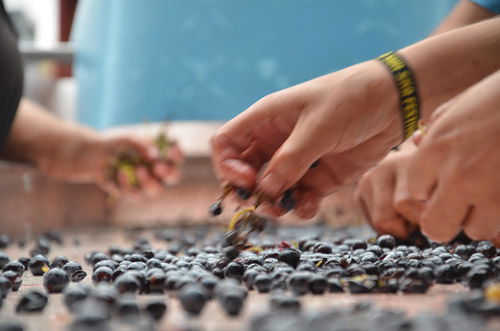
We now carry out most of our fermentation in open 500L barrels. 12-15 barrels (that are 6-10 years old) are left open-ended, and used as fermentation vessels. They need swelling with water before harvest starts, so that they are properly sealed.
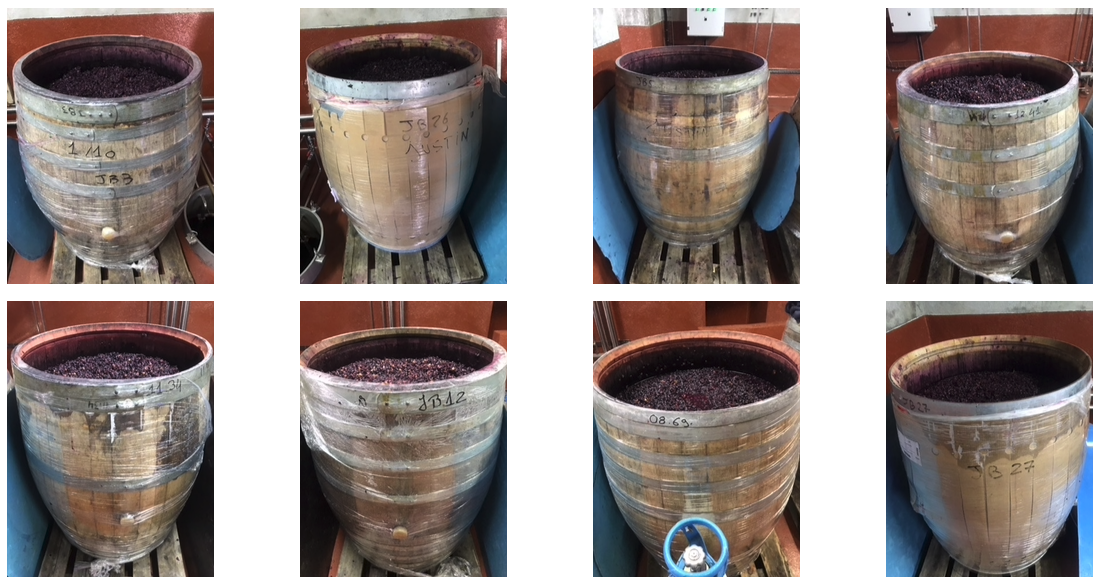
We also ask for our new barrels (usually 3 a year) to be delivered open, and we ferment in them before closing them up at the end of harvest, and using them as maturation barrels for the next 5 years.
When we have filled a barrel, if there is space in the chilled container, we will chill the barrel down towards 2 degrees Celsius, to arrest any fermentation, and allow a long pre-fermentation maceration. This gives us deep colours, and LOADS of fruit flavours before the fermentation starts.
This small-batch fermentation is both more risky, and more time-consuming, but the integration of oak character, and the gentle pushing down of the cap, rather than the rougher "pumping over" both combine to give a softer extraction of tannin and colour.
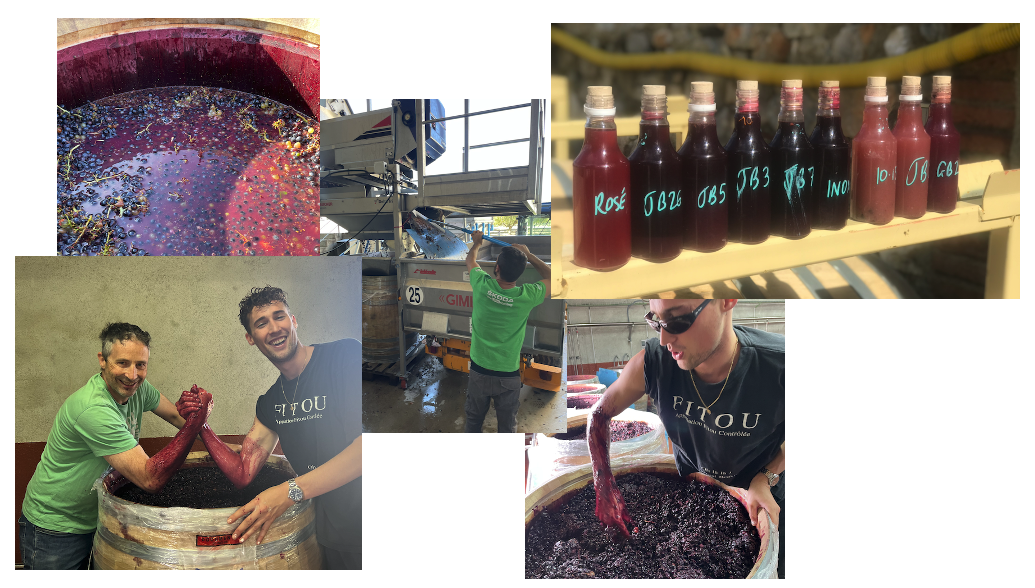
If we have a lot of Carignan, we will ferment the rest in a 1,600L stainless steel tank, and pump over as required.
The temperature of fermentation can be controlled a little by lowering water-cooled plates (like radiators in reverse) into the wine, but otherwise the amount of intervention is very low.
Once the fermentation is completed, the wine is allowed to macerate with the skins of the grapes for a further 1-3 weeks (depending on the ripeness and tannin quality), to continue building the tannin extraction and polymerisation, and then the finished wine is drained off into barrels.
The wine-soaked skins are loaded into a small press, where the remaining wine is gently pressed out of them, and the dry pomace is composted to be spread on the vineyards later in the year.
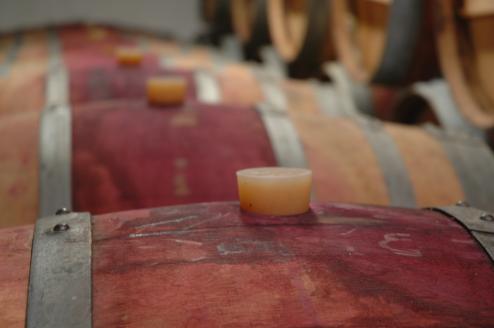
Domaine of the Bee is aged in 500 Litre barrels with the occasional 225 Litre for press wines and smaller lots, approximately 25% of which are new, and the rest between 1-5 years old.
Most reds spend between 14-16 months in barrel, before being blended, bottled, shipped and released for sale.
We made a film 10 years ago - and things haven't changed much since!
